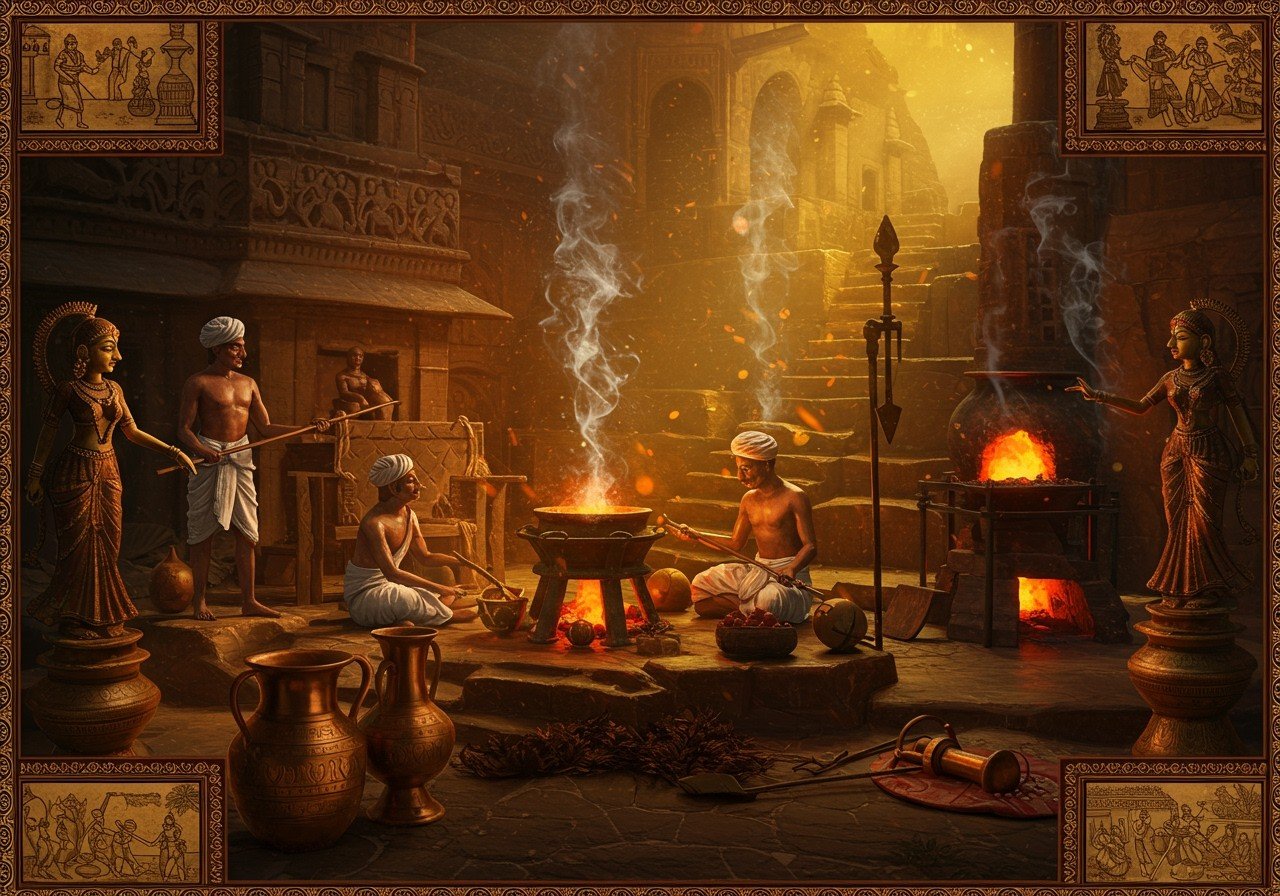
The Bronze Age in India, spanning from approximately 3300 to 1300 BCE, represents a pivotal era in the subcontinent’s history. This period witnessed the rise of the Indus Valley Civilization, a sophisticated urban society known for its advanced urban planning, intricate drainage systems, and enigmatic script. This civilization, also known as the Harappan Civilization, emerged from neighboring villages, drawing inspiration from the Mesopotamian model of irrigated agriculture. The Bronze Age is also characterized by the development of metallurgy, urbanization, and complex social structures, setting the stage for future civilizations in India. This exploration delves into the onset of the Bronze Age in India, the flourishing of the Indus Valley Civilization, and the cultural and technological advancements that defined this era.
Defining the Bronze Age
The Bronze Age is distinguished by the widespread use of bronze, an alloy of copper and tin, for crafting tools, weapons, and various artifacts. This metallurgical innovation revolutionized society, impacting agriculture, warfare, and trade. Bronze tools enhanced farming efficiency, leading to increased crop production. Bronze weapons provided a significant advantage in warfare, being more durable and effective than their stone predecessors. The production and exchange of bronze artifacts stimulated economic growth and facilitated trade networks.
The Bronze Age also witnessed the emergence of intricate urban centers and the development of writing systems, fostering significant cultural and societal transformations. This era laid the groundwork for future advancements in India.
The Dawn of the Bronze Age in India
The Bronze Age commenced in India around 3300 BCE, coinciding with the rise of the Indus Valley Civilization. Key developments during this period include the transition from the Neolithic period to the Bronze Age, marked by significant archaeological discoveries. Technological and societal shifts, such as improved farming tools and the growth of urban centers, further characterized this transitional phase. Influences from neighboring regions also played a crucial role in shaping advancements within India.
The Indus Valley Civilization: A Bronze Age Marvel
The Indus Valley Civilization, a remarkable Bronze Age society, stands as one of the world’s earliest urban cultures. Major cities like Harappa and Mohenjo-Daro exemplify the civilization’s sophisticated urban planning, featuring well-designed drainage systems and grid layouts. Evidence of trade and commerce, such as seals and weights, reveals the civilization’s economic activities. The social structure and daily life of the inhabitants demonstrate organized community living. The Indus script, though still undeciphered, offers tantalizing glimpses into their possible linguistic contributions.
Life Beyond the Indus: A Broader Perspective
Life in India during the Bronze Age extended beyond the confines of the Indus Valley Civilization. Regional variations in cultural practices existed alongside the Harappan Civilization. Agricultural practices formed the backbone of the economy, supporting the growth of urban centers. Early forms of worship and ritual practices emerged during this period. Trade routes and interactions with other civilizations flourished, enriching cultural exchange and economic development.
Technological and Cultural Achievements
The Bronze Age in India witnessed remarkable technological and cultural progress. The development of bronze metallurgy and its application in various fields revolutionized toolmaking and warfare. Artistic achievements are evident in the intricate pottery, sculptures, and jewelry discovered at archaeological sites. Architectural innovations are showcased in the urban planning and construction of cities like Harappa and Mohenjo-Daro. Advancements in agriculture, including irrigation techniques, enhanced food production. Cultural contributions encompass early forms of literature, art, and religious practices.
Poojn.in: Connecting You to India’s Bronze Age Heritage
Poojn.in, India’s leading online store for cultural goods and services, offers a unique opportunity to connect with the rich heritage of the Bronze Age. Explore our collection of authentic brass and bronze items, handcrafted by skilled artisans using traditional techniques. These items serve as a tangible link to the artistry and craftsmanship of our ancestors.
- Brass Chalon (14-inch diameter): This traditional circular tray, priced at ₹1,049 (reduced from ₹1,599), embodies the ancient metalworking techniques of the Bronze Age. Its elegant design and durable construction make it a beautiful and functional addition to your home or temple. Use it for offerings, rituals, or simply as a decorative piece.
- Traditional Brass Ritual Items: Discover a wide array of brass ritual items that honor the legacy of Bronze Age craftsmanship. From lamps and incense holders to bells and plates, each piece is meticulously crafted to enhance your spiritual practices. Poojn.in offers a diverse selection to meet your specific needs and preferences.
- Bronze and Brass Decorative Pieces: Adorn your home or temple with authentic bronze and brass decorative pieces. These exquisite pieces not only add aesthetic beauty to your surroundings but also serve as a reminder of India’s rich cultural heritage. Choose from a variety of statues, sculptures, and wall hangings to create a space that reflects your reverence for tradition.
At Poojn.in, we are committed to providing high-quality, authentic products that connect you to India’s spiritual and cultural heritage. We offer secure online shopping, pan-India delivery, and detailed product descriptions to ensure a seamless and satisfying experience. Visit Poojn.in today and explore the treasures of the Bronze Age.
Conclusion
The Bronze Age in India represents a foundational period in the subcontinent’s history. This era laid the groundwork for numerous technological and cultural advancements that would shape future civilizations. The development of bronze metallurgy, urbanization, and complex societies during this period testifies to the ingenuity and adaptability of our ancestors. By studying the Bronze Age, we gain a deeper understanding of India’s rich heritage and its remarkable contributions to the world. The legacy of the Indus Valley Civilization and other regional cultures continues to inspire and connect us to our past, reminding us of the significance of preserving and celebrating our traditions while embracing progress and innovation.


